Summer camping plans? Don't go without one of the best portable solar panels to keep your gear running for the weekend or longer.
Our editors and experts handpick every product we feature. We may earn a commission from your purchases.
Learn more.


Summer camping plans? Don't go without one of the best portable solar panels to keep your gear running for the weekend or longer.
Our editors and experts handpick every product we feature. We may earn a commission from your purchases.
Learn more.
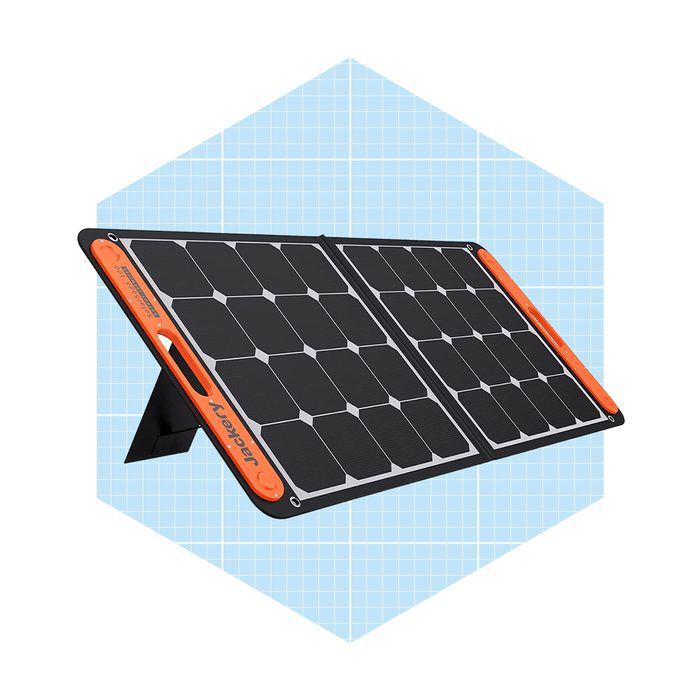
Pros:
Cons:
This is the solar panel I used during my three-month cross-country trek, and I can’t recommend it enough. Thanks to its lightweight, foldable design, durability and versatility, it’s one of the best portable solar panels. The Jackery SolarSaga boasts an impressive IP65 waterproof rating, which means it’s thoroughly splash-proof, although you should avoid leaving it out in the rain or submerging it in water.
It has an ETFE-laminated casing that, in my experience, is also durable against the paws and claws of a very excited and energetic dog. Do with that information what you will! One of my favorite things about the SolarSaga is that it’s easy to store in tight quarters (like a Subaru sleeping a human and a large dog).
Use the kickstand to prop this bad boy up on just about any terrain at any angle—ideal for backcountry weekends in the high desert. Best yet, the SolarSaga features one native USB-C and USB-A port to charge two small devices directly. And yes: You can charge a Kindle or pair of headphones by plugging them right into the solar panel!
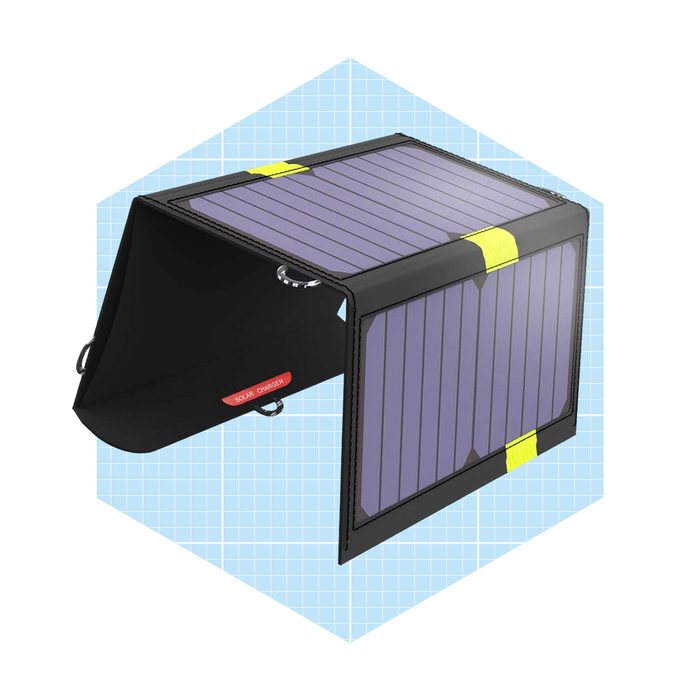
Pros:
Cons:
Good gear doesn’t usually come cheap, and I tend to be a firm believer in “you get what you pay for.” However, the X-Dragon 20-Watt Portable Solar Panel will pleasantly surprise gearheads and is a Godsend for adventurers on a budget. It’s about the size of a notebook when folded, and it unfolds into three panels for maximum sun exposure. There’s no kickstand, but you can still prop up the panels.
On dry terrain, you can lay it out so that all three panels directly face the sun. It also has a high efficiency of 25% (meaning it can convert up to 25% of sunlight into energy) and charges up to three small devices at once. Furthermore, it features built-in USB ports, a micro-USB cable and four hooks. Additionally, when folded, all the panels are covered by a thick, durable fabric to protect them from dust, water, and abrasions.
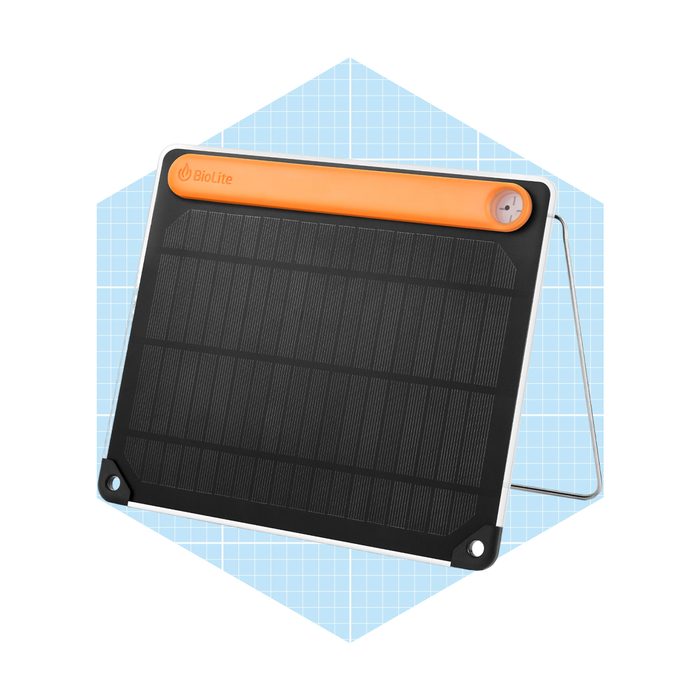
Pros:
Cons:
If you don’t want to lug around a solar panel and a battery/power bank, check out the BioLite Solar Panel 5+ 2.0. This portable solar panel stores 3,200 milliamp hours (mAh) in the onboard battery and offers direct charging via a USB port. The solar cell output capacity is admittedly low at just 5 watts, but the convenience truly can’t be beaten. This is a great option for weekenders and those who tend to stay near amenities.
That said, for the right buyer, this BioLite portable solar panel makes packing up and breaking down camp a breeze thanks to its 13.8-ounce weight. Its 360-degree kickstand easily positions it for maximum efficiency. Plus, it’s rated IPX4 for water resistance, so it can withstand minor splashing.
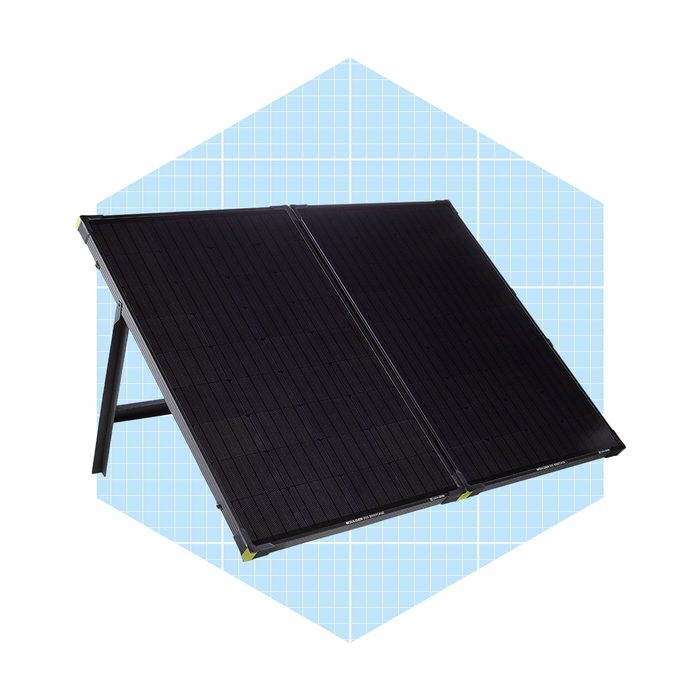
Pros:
Cons:
Ideal for RV-ers, van campers and those who tend to set up camp and stay in one place for a while, the Goal Zero Boulder 200 Solar Panel Briefcase is a high-powered and highly efficient option. Boasting 200 watts of power and a 14,000-milliamp output to devices, this foldable solar panel is capable of keeping several devices powered when paired with a compatible portable power station.
It’s designed to pair with a Goal Zero Yeti power bank of 1000 watts or higher, but if you already have a third-party power bank, you can check with Goal Zero about compatibility. While this panel is technically portable, it’s quite heavy at 42 pounds. That’s why it’s ideal for people staying at RV camps for an extended time.
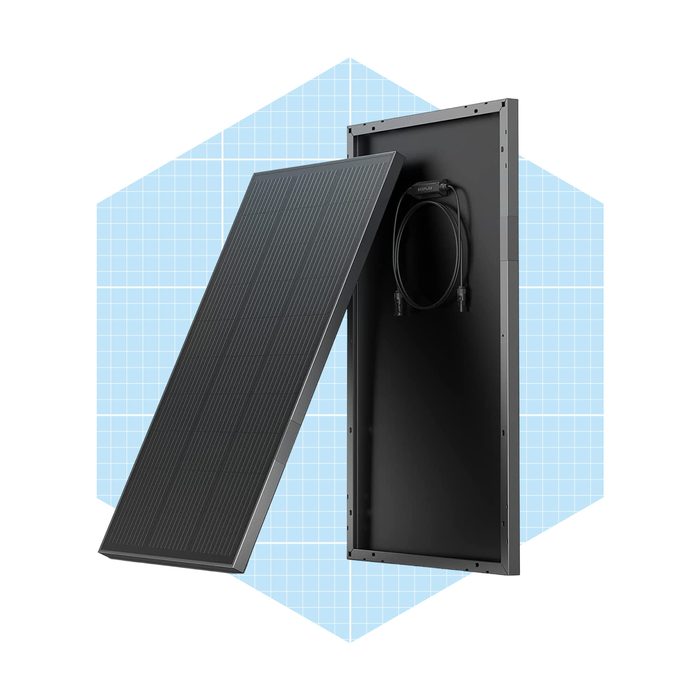
Pros:
Cons:
Most portable solar panels these days are at least somewhat water-resistant. But for ultimate peace of mind, a highly water-resistant panel is best. Enter the EcoFlow 200W Flexible Solar Panel, a uniquely flexible and lightweight panel that also boasts an IP68 water-resistance rating.
This panel survives rain if left out at camp, and it can be submerged in freshwater at depths of up to 1.5 meters for up to 30 minutes. That rating also means the panel is completely dustproof, so you don’t need to worry about debris messing up any of the components. This is ideal for rugged desert adventures, but it still might behoove you to learn how to clean a solar panel if necessary.
In addition to its durability, the EcoFlow has a conversion efficiency of 23% and can produce up to 500 Watt-hours or 35-45 Amp-hours of electricity per day, although that’s highly dependent on the weather and sun exposure.
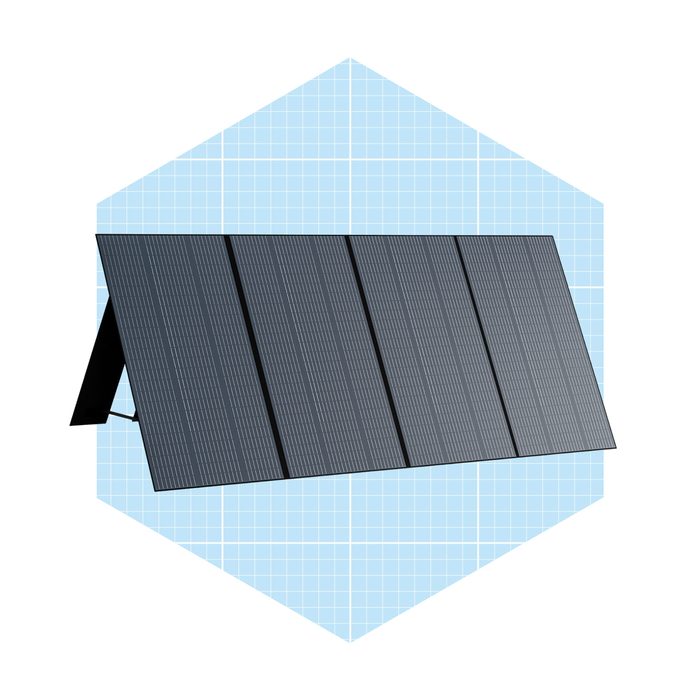
Pros:
Cons:
This powerful 350-watt portable solar panel will run you close to $800, but it’s worth the splurge. The Bluetti PV350 is one of the best in terms of power output, efficiency and milliamp hours. It’s not small—bulkiness is the price you pay for power and capacity—but it’s still quite portable, weighing in at a hair over 30 pounds and folding into a nice briefcase-style panel.
The Bluetti brand is well known for its off-grid power stations, and this one has a 23.4% conversion rate that’s close to the best in the industry. It sports an MC4 connector, so while it’s designed specifically to work with certain Bluetti power banks, it easily connects to most other solar-specific generators. Finally, this solar panel is scratch-resistant and splashproof with an IP65 rating to withstand your outdoor hobbies from fishing to camping or hunting.
Keep this solar panel guide handy as you search for the best options.
As shopping experts, we looked through many different portable solar panels and combed through different specs to ensure that we’re only recommending the buys that are worth your time and money. Then, we research the features that speak to the solar panel’s quality, taking advice from industry insiders and subject-matter experts on what makes a product a smart value (or worthy of a splurge). Finally, we do the work of combing through user reviews to see how real people interact with the product, and if it stands up to the test. Learn how to make your own DIY solar panel.
With proper care, portable solar panels can last many years. The overt lifespan depends a lot on its durability components, such as its water-resistance rating, dust-resistance rating, and whether it has a protective case or covering. However, the owners’ care plays a huge role in the lifespan of any solar panel.
This depends on the wattage of the solar panel, its efficiency (how much sunlight it turns into energy), the charging output, its milliamp capacity, whether it has native charging ports or requires a power bank and the type of device it’s charging. A powerful and efficient solar panel can charge a cell phone in an hour on a sunny day, but a less powerful, less efficient panel could take hours to fully charge a laptop on a partially cloudy day. Here’s how to get internet when you’re living off the grid.